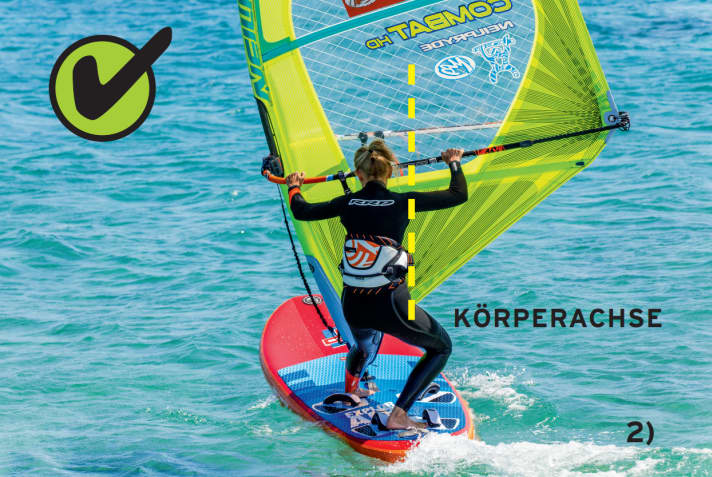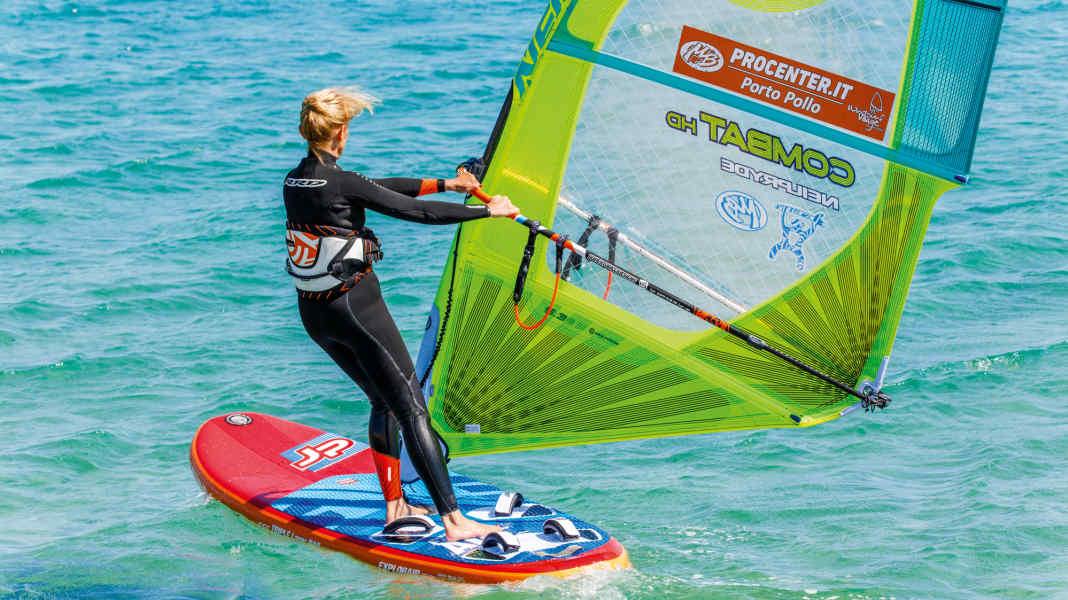
- Ideal conditions: 2-3 Beaufort, smooth water
- Ideal material: longboards or wind SUPs with centreboard, light sails
- Learning requirements: Start
Your fixed point when windsurfing is the wind, which is why there is no left and right on the water, only steering movements in the direction of the wind.
- Windward (to the wind) and
- Lee (away from the wind).
Have you performed the start correctly (You can find out how to start the sheet here), you automatically start on a half-wind course, i.e. exactly 90 degrees to the wind. You now have two options to change your direction - either by leaning into the wind or by dropping away from the wind. Both steering movements are initiated by shifting the sail.
In this article:
Upwind/downwind windsurfing
Anluven is a steering movement in which the board turns to windward.
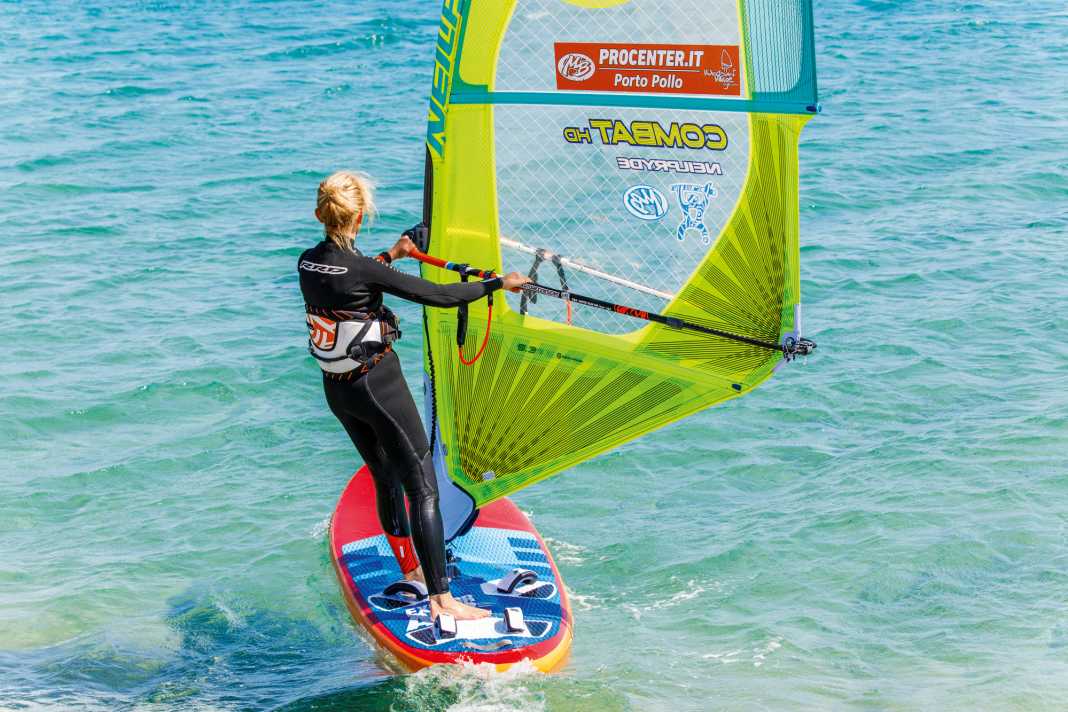





What all wind-powered sports have in common is that it is not possible to ride directly upwind. For this reason, you have to stop luffing in good time - before your board has turned completely upwind. To do this, bring the sail back into the normal riding position as shown above, the boom is almost horizontal again. Now slide the sail hand back on the boom and keep the sail tight.
Falling off/riding downwind while windsurfing
Dropping is a steering movement in which the board turns to leeward - the opposite of luffing.
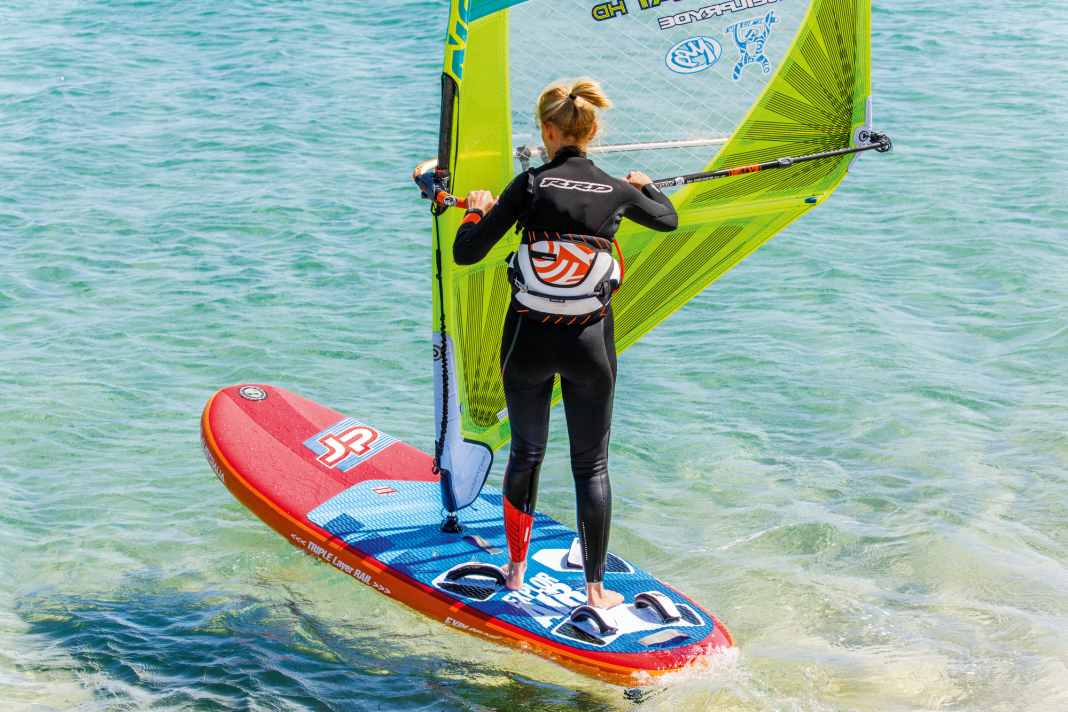





Important: Do not avoid the rising sail draft during the drop by opening the sail, but keep your sail hand tight and use your body weight to avoid being pulled forwards over the board!
The physics behind steering
Without wanting to go too deeply into the physical background, it helps to know the underlying principle: The sail's centre of pressure is where the forces in the sail are concentrated; in a sense, it represents the centre of force of the sail. The so-called lateral force acts against the sail force. The lateral force includes, for example, the resistance of the centreboard, the fin and the board edges in the water. The centre of these lateral forces is the lateral pressure point, which is usually located in the area of the centreboard and represents the pivot point of the board, so to speak.
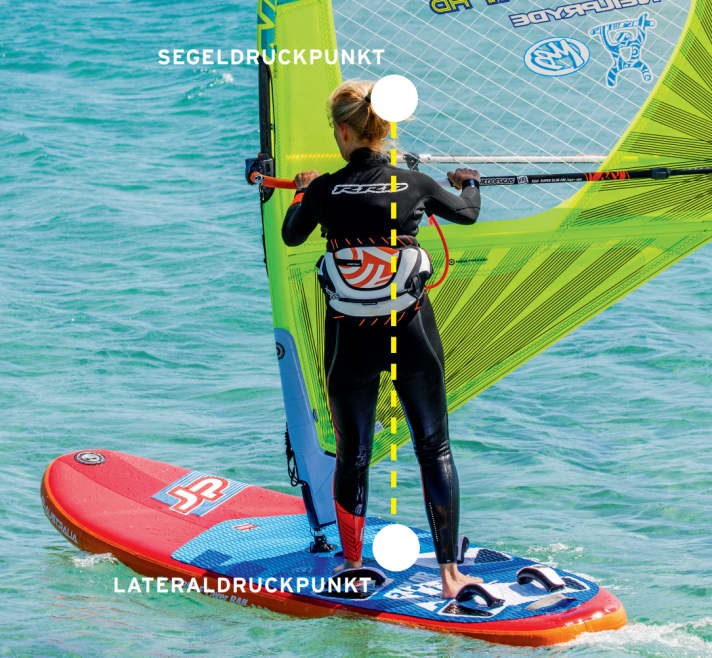
At normal speed (top picture), the sail pressure point and lateral pressure point are exactly on top of each other, the board moves straight ahead. If you windward, you move the sail pressure point behind the lateral pressure point (= pivot point), the stern is pushed away, so to speak, and the bow consequently turns into the wind. Vice versa when dropping: The sail's centre of pressure moves in front of the pivot point and the bow is pushed to leeward.
Taxes at the sailing level
When steering, the sail is moved along an imaginary line, the so-called "sail plane". This describes the angle at which the sail is positioned in relation to the board when travelling straight ahead. The steering movements - luffing and dropping - should be carried out on exactly this line, which means that the sail should neither be tightened nor opened when steering.
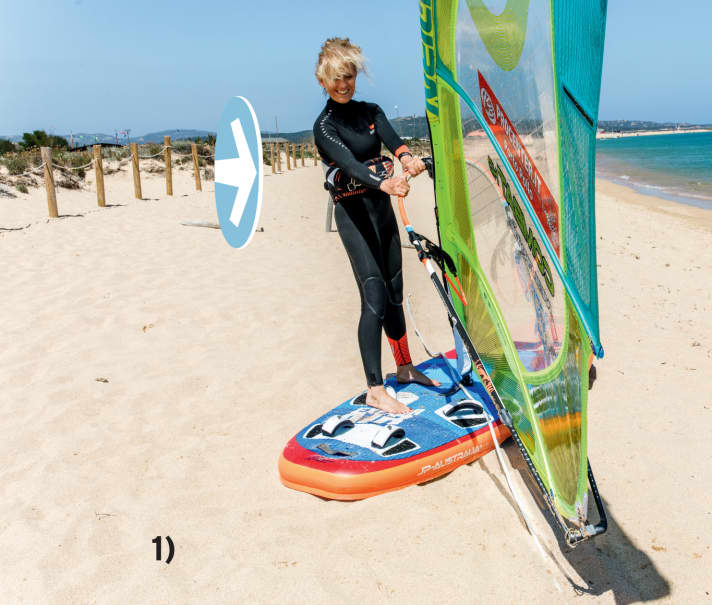
To be able to move the sail on the sail plane, you must move your hands on the boom. If the sail is tilted backwards in the sail plane (1), move your hands on the boom closer to the mast.
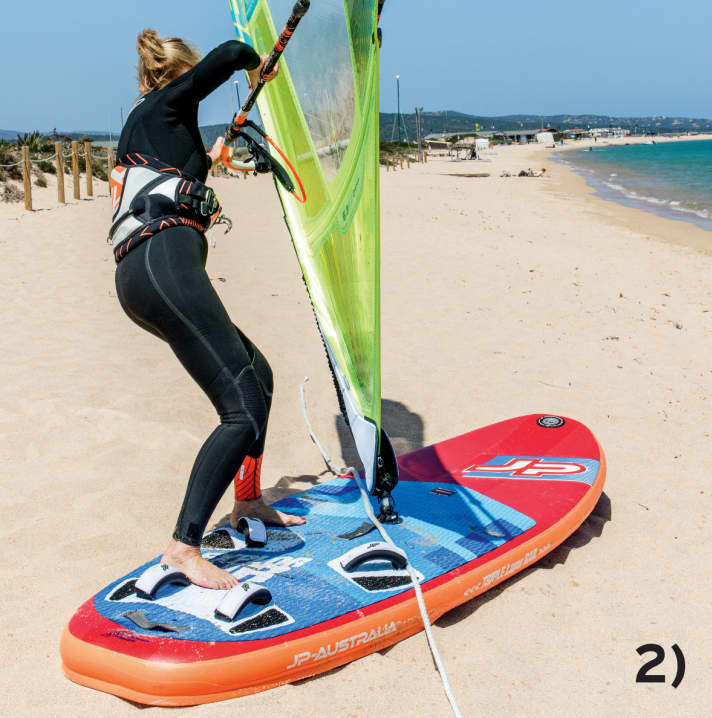
Dropping on the sail plane, on the other hand, requires a wide grip on the boom, the sail hand slides further back and keeps the sail consistently tight (2).
Error analysis: Anluven
When luffing, only the sail should move in the plane of the sail, the body should remain straight. Moving your hands on the boom is essential so that you can remain upright when tilting the sail backwards. In error pattern (1), the sail hand was not shifted forwards, resulting in increasing sail pull and a noticeable decrease in the speed of the board due to the sail being unintentionally pulled over the board.
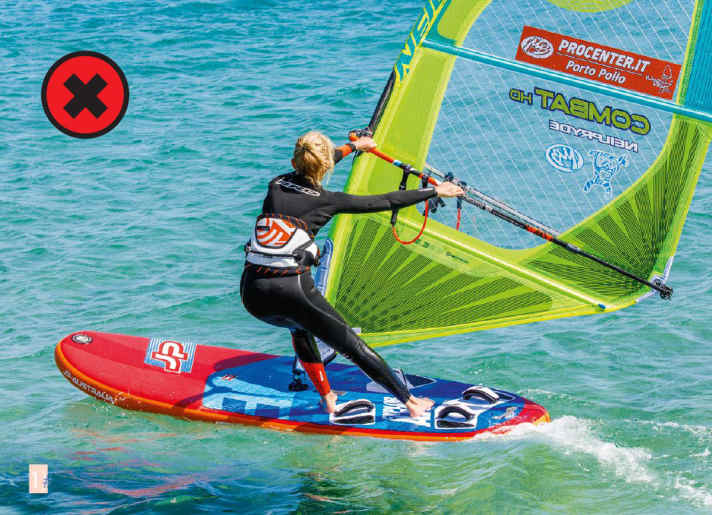
Tip: If you notice that your board is not moving when you start to luff, even though you can feel the sail pull, go back to the starting position, start again and then make sure that you move your hands forwards on the boom and move the sail on the sail plane, i.e. at the same angle to the board, when you start to luff.
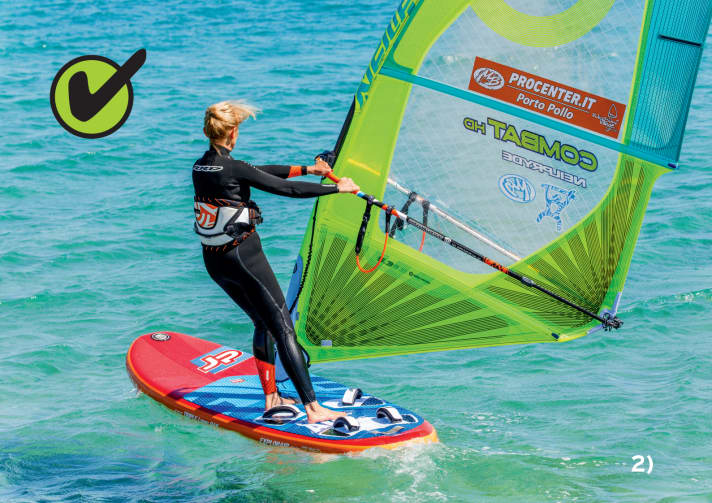
Error analysis: Dropping
As already mentioned, it is completely normal for the sail draft to increase noticeably when dropping. This is why it often happens that you are pulled forwards over the board by the sail and cannot control the sail pull
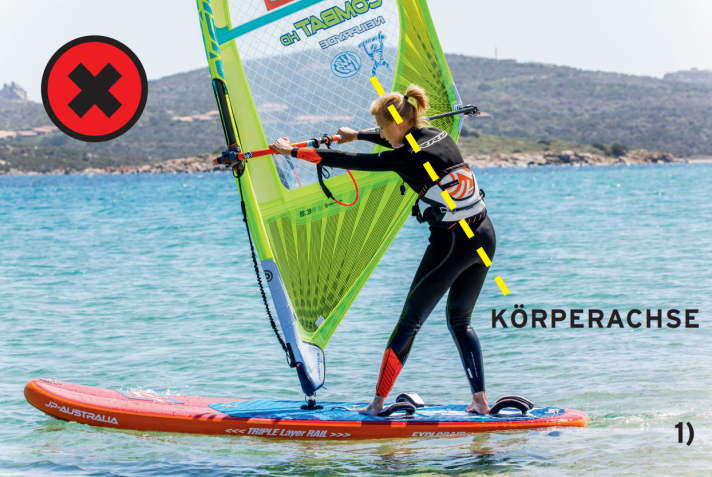
While you can counteract the rising sail draft during normal straight-ahead sailing by raising the sail in a controlled manner, i.e. opening the sail with the sail hand, this will not help you when dropping the sail. Why? Although the sail pull decreases as usual when raising the sail, the board will not turn any further to leeward. For this reason, you have to counter the increasing sail pull with your body weight: Before dropping, try to shift your weight a step back towards the stern and also move your hands backwards on the boom. Now drop in the plane of the sail and hold the sail tightly with your back hand. Keep your weight over your back leg and lean your shoulders back - this way you can control your sail even in strong winds and convert the sail pull into speed.
